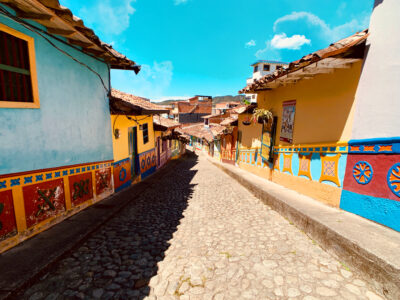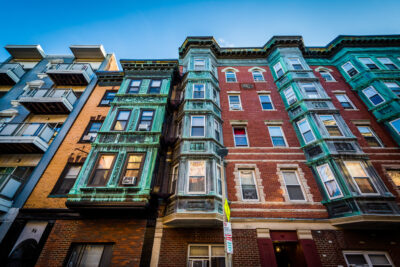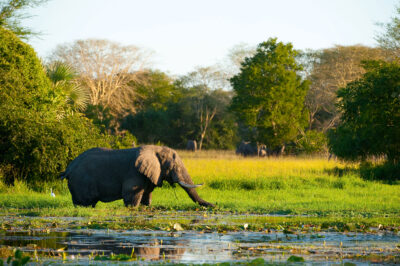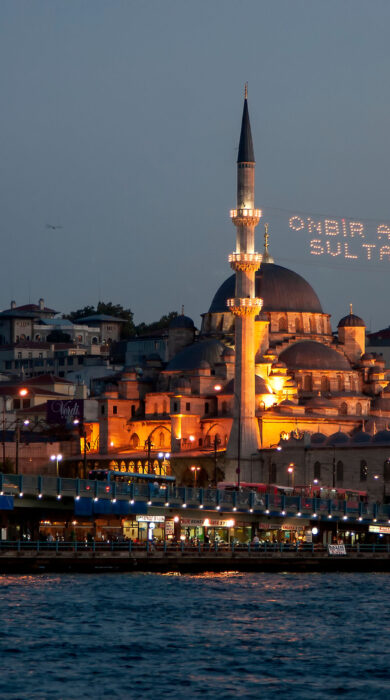
Fascinating Ramadan traditions from around the world
From iftar cannons and Ramadan drummers to Vimto and pide, many countries put their own spin on the month of fasting
Ramadan, the holiest month in the Islamic calendar, is about to begin, and it’s a special time for billions of Muslims around the world.
As the Islamic calendar is based on the lunar cycle, the dates of Ramadan move around 10 days every year, and the start and end dates are only confirmed based on the sighting of the crescent moon. This year’s Ramadan is expected to start on the evening of 28 February.
A time for spiritual reflection, Muslims fast from sunrise to sunset throughout the month. There are traditions that are common to all countries, like breaking the fast post-sunset for iftar and rising early for the pre-dawn meal suhoor, as well as giving a portion of their wealth away to charity (known as Zakat al-Fitr), but some countries do things a little differently.
From unique foods to Ramadan décor, here are some of the Ramadan traditions you’ll find around the world.
Türkiye
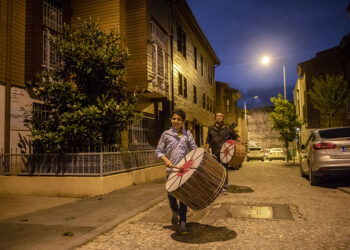
Cities around Türkiye light up during Ramadan, with mosques hanging Mahya, decorative lights featuring quotes from the Qur’an, between their minarets. Muslims around the world break their fast with dates, as they provide a quick energy boost, but in Türkiye, that’s likely to be followed with a special Ramadan Pidesi. Different to your typical pide, this flatbread has a weave pattern and is topped with sesame seeds – perfect for mopping up other dishes like soup or meat. Aside from giving Zakat, Türkiye has its own generous Ramadan tradition: Askida Ekmek. Translating to ‘bread on a hanger’, the tradition sees people buy two loaves of bread at the bakery, but leaving one for someone less fortunate than you to take later.
After a day of fasting, iftar tends to be a sumptuous affair, with a buffet of dishes lovingly prepared each night. That’s not limited to savoury treats – desserts are a must, too. Rose water is commonly served during the month, and in Türkiye, it’s used to make Güllaç, a typical Ramadan dessert with pastry, milk, rose water and pomegranate.
All that feasting is bound to send you into a food coma, but you don’t have to worry about sleeping through suhoor as drummers take to the streets to wake everyone up for their morning meal.
Read next: Turkish delights: 3 tasty recipes inspired by the Black Sea
Indonesia
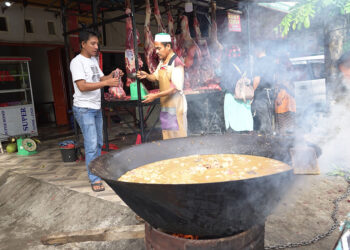
Preparations for Ramadan begin early in Indonesia, although they vary across the different regions. In Java, Muslims will return to cemeteries to pay tribute to their ancestors, spreading rose petals on top of their graves around a week before Ramadan begins as part of Nyekar, while in Yogyakarta, Ramadan is welcomed with Padusan, ritual cleansing in natural springs and lakes. In Aceh, Muslims gather for Meugang, a traditional meal of beef, goat or buffalo eaten with your family just before the month starts.
Read next: Indigenous Indonesia: 6 best places to soak up authentic Sulawesi
Egypt
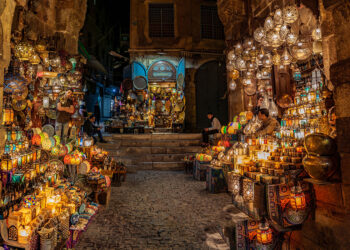
Another country that is lit up for Ramadan, Egypt’s streets are often lined with Fanous, a kind of traditional lantern, for Ramadan, although these days they are common across the Muslim world.
Instead of just eating dates, many Egyptians break their fast with Khoshaf, a compote of dried fruits and nuts. Then, once the feasting is finished, it’s onto Qatayef, a sweet dumpling stuffed with cream or nuts.
Iraq
If you’re in Iraq during Ramadan, you’ll likely encounter groups of men playing Mheibes. Believed to have origins in the Abbasid Caliphate (750-1258), the game sees one team hide a ring among its members while the other must try to work out who has it by reading their body language.
Bahrain
While kids aren’t expected to fast until they hit puberty, they’re certainly not left out during Ramadan. In many Muslim countries, school days will be shorter to accommodate for the fact that they will have been kept up late and woken up early to spend time with their families. In Bahrain, and other GCC countries, the 15th night of Ramadan is all about the little ones as the country celebrates Gerga’oon. Children will dress up in their finest ware and walk the streets going door-to-door singing and collecting candy as they go.
It may seem odd, but in Bahrain, and throughout the wider Gulf, the drink most typically associated with Ramadan is Vimto. The British drink was first imported to Bahrain by the Aujan family in 1927, and has been a staple ever since, presumably because the high sugar content gives an energy boost to those breaking their fast.
Bosnia and Herzegovina

Bosnia and Herzegovina maintains a Ramadan tradition that began in Egypt and has spread to countries including the UAE, Qatar and Saudi Arabia: The iftar cannon. Fired nightly at sunset to let Muslims in the city know they can break their fast, the cannon in Sarajevo is located in the Yellow Fortress, with many gathering here.
Ramadan isn’t just associated with sounds, but smells, too, with the scent of freshly baked somun wafting through the streets. The traditional bread came to the country via Türkiye, and has a grid pattern on top, said to resemble mušebak, the wooden screen on women’s windows in a Muslim household.












